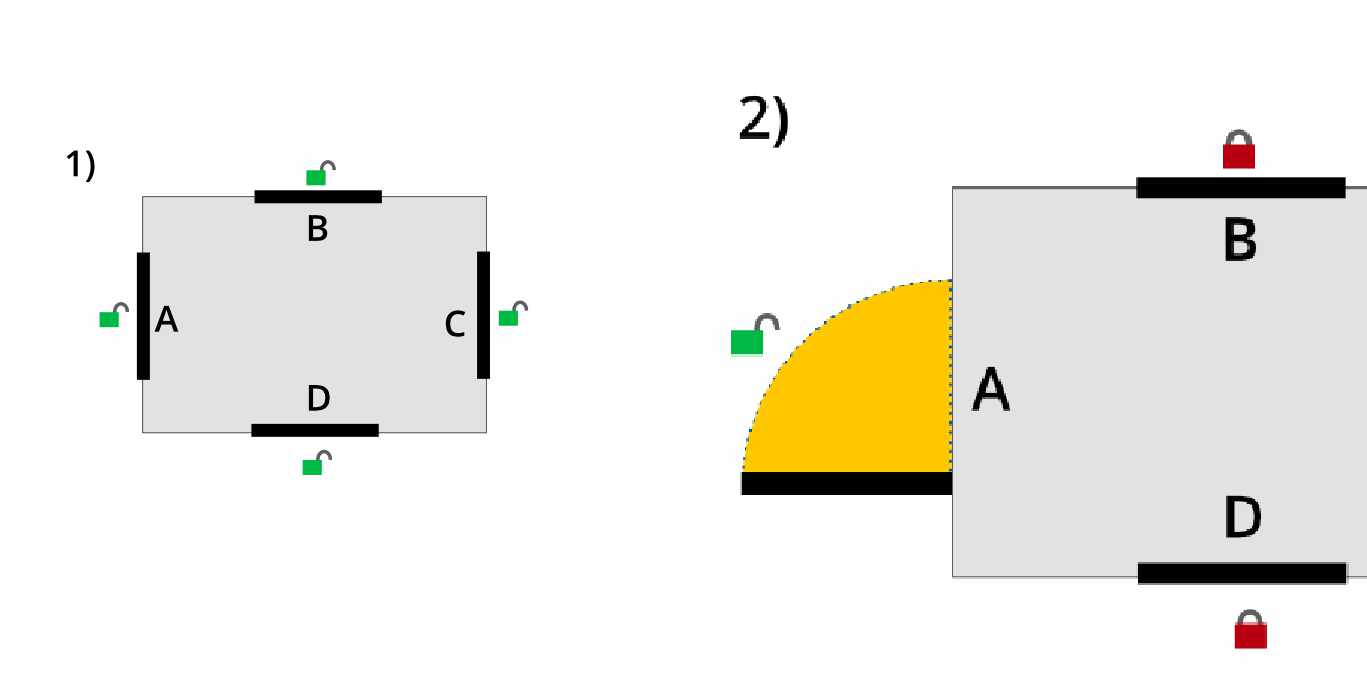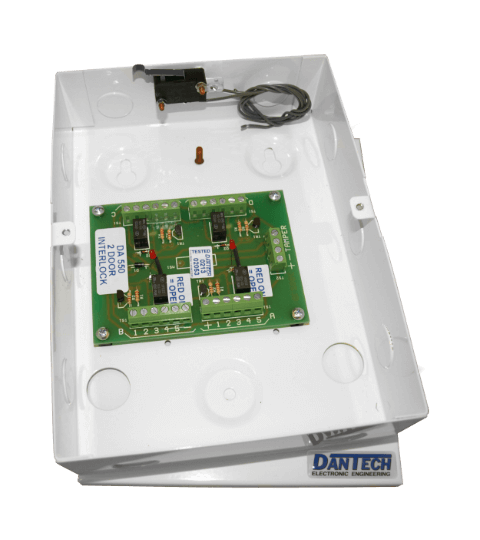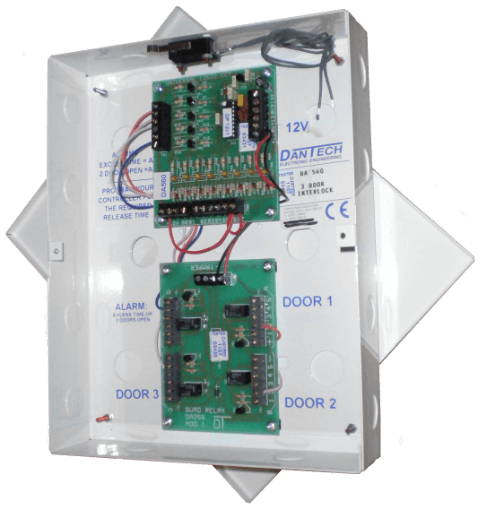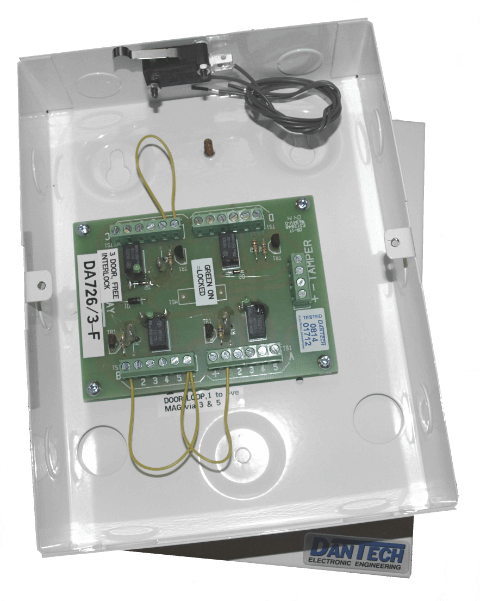Door interlock modules

A typical door interlock controller is used to ensure that there is always at least one locked door between inner and outer environments.
Why use an interlock? The system requires the user to pass through two-doors in series to enter the area. If the doors are interlocked, both doors cannot be open at the same time.
This is ideal for keeping two areas separate from shared noise, temperatures and ambient light levels. These are also ideal for maintaining hygiene or security within an area.
A two-door interlock such as the DA550 is the most common, but some applications require the need for a three-door interlock or an interlock where the doors are normally open and only lock closed when one of the doors is open, see DA726 for more information.





